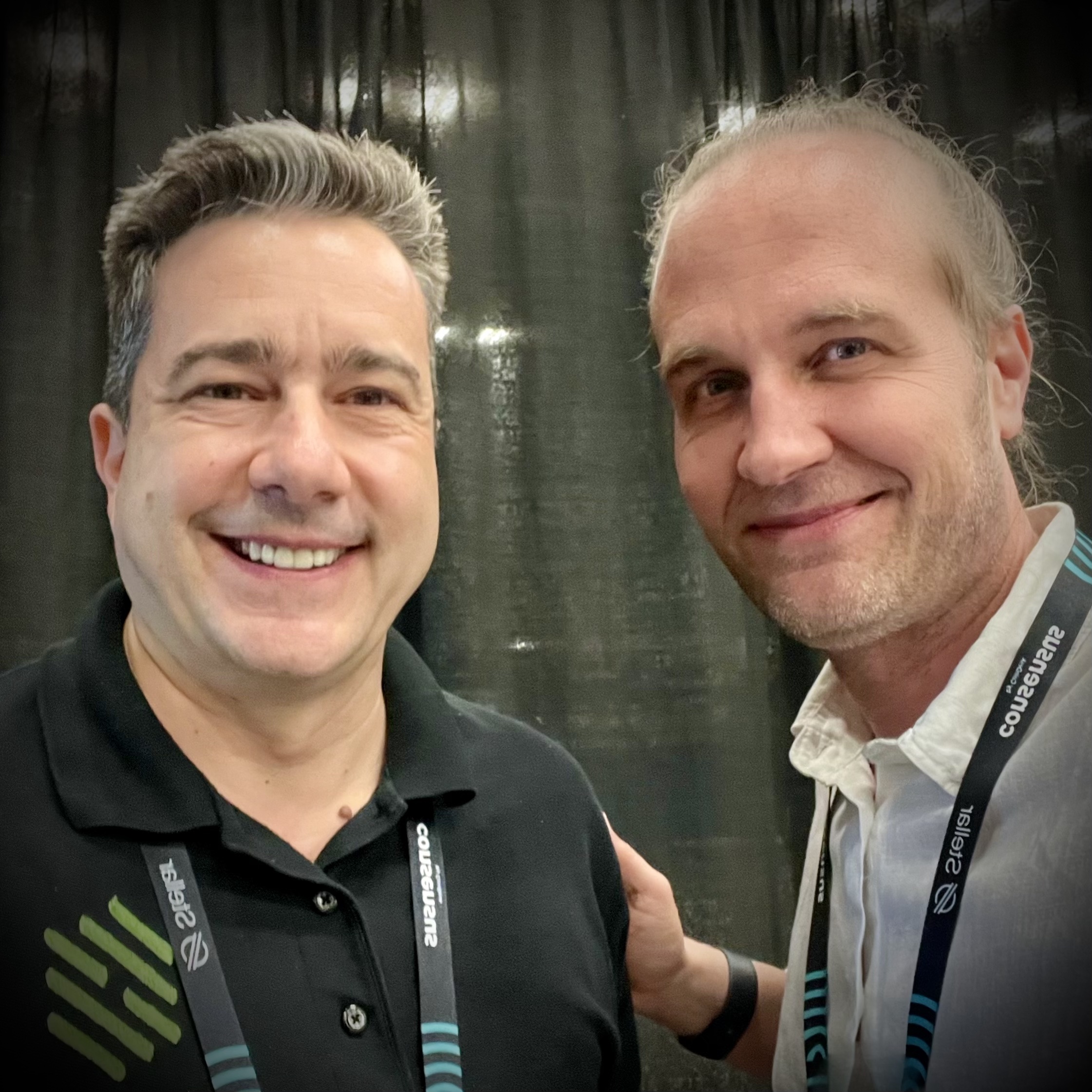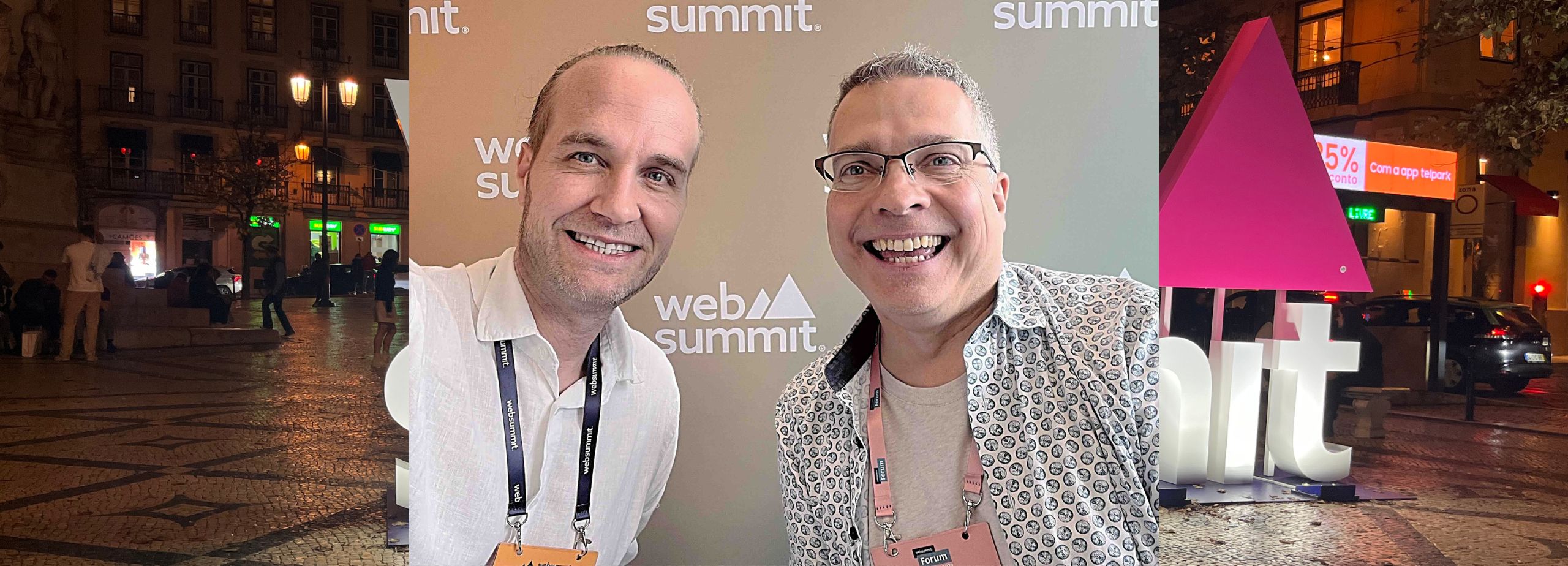Ever wondered how your everyday devices could become a source of income and contribute to a greener planet?
Join us for an enlightening conversation with Domenic Carosa, co-founder and chairman of Hivello, where he shares his journey from listing his first company on the Australian Stock Exchange in 2000 to becoming a pioneer in the blockchain industry.
Discover how Hivello aims to democratize decentralized physical infrastructure networks (DePIN) by allowing users to earn money through sharing their computer resources. Domenic also delves into their recent $2.5 million fundraising and ambitious plans for product development, aiming to make Web3 accessible to the masses.
Explore the future of Web3 mining as we discuss the environmental benefits of repurposing obsolete equipment through innovative methods that utilize everyday devices like laptops and mobile phones. Domenic emphasizes the importance of building a strong community in the Web3 space and shares strategies for engaging users on platforms like Telegram, Discord, and Twitter. From contrasting traditional Bitcoin mining with new sustainable approaches to outlining plans for onboarding the next million users, this episode is packed with insights on how technology and community can drive positive change for both our digital and physical worlds. Don’t miss the excitement about the future of Web3 mining, community building, and sustainable innovation.
Exploring the Future of Decentralization: An Insight into Hivello and DePIN with Domenic Carosa
In the ever-evolving landscape of Web3, where technology meets decentralization, one key player making waves is Hivello. Co-founded by Domenic Carosa, Hivello is at the forefront of Decentralized Physical Infrastructure Networks (DePIN), a revolutionary concept aimed at democratizing the use of technology and resources. In this episode of the Web3 CMO Stories podcast, host Joeri Billast dives deep into Domenic’s journey, the vision behind Hivello, and how DePIN is set to change the game for both tech enthusiasts and everyday users.
The Journey to Hivello: From Digital Media to Blockchain
Domenic Carosa’s story begins in the mid-1990s with his initial foray into the tech industry. Having listed his first company on the Australian Stock Exchange in 2000, Domenic spent eight years in digital media before transitioning to venture capital, focusing on SaaS (Software as a Service) solutions. However, it wasn’t until 2013 that Domenic encountered Bitcoin, a discovery that would profoundly shift his career trajectory.
Domenic’s venture into the world of blockchain began with the launch of Banxa, a company that remains a leading provider of fiat on- and off-ramps in the cryptocurrency industry. His experiences with Banxa, particularly in bridging the gap between the fiat and crypto worlds, laid the groundwork for Hivello. Founded with a mission to make DePIN accessible to the masses, Hivello aims to empower users by enabling them to monetize their spare hardware, such as CPUs, GPUs, and storage devices.
Understanding DePIN: A New Frontier in Decentralization
DePIN, or Decentralized Physical Infrastructure Networks, is a concept that resonates deeply with the original ethos of the Internet—decentralization. Over the years, the digital world has seen a shift toward centralization, with major infrastructure and hosting companies like Google and Amazon dominating the space. DePIN seeks to reverse this trend by decentralizing critical infrastructure, allowing users to share their resources in exchange for tokens, stablecoins, or even fiat money.
Domenic explains DePIN using relatable analogies: Just as Airbnb allows you to rent out your house and Uber lets you monetize your car, DePIN enables you to earn money by sharing your computer’s resources. This passive income model is not just a theoretical concept; it’s already being implemented through platforms like Hivello, which makes it easy for users to contribute to DePIN and earn rewards.
Real-World Applications: From Mapping the World to Training AI Models
To illustrate the practical applications of DePIN, Domenic shares examples like Hive Mapper, a platform where users install a hardware device in their car that maps the world as they drive. This decentralized approach creates an alternative to centralized services like Google Maps, with users earning tokens for their contributions.
Hivello, on the other hand, focuses on leveraging idle computing resources for various tasks, including training AI models. By tapping into the power of GPUs (Graphics Processing Units), which are crucial for AI model training, Hivello offers a decentralized and cost-effective solution that is 80-90% cheaper than traditional centralized methods. This not only opens up new revenue streams for users but also contributes to the growing demand for AI processing power.
Raising Funds and Scaling Hivello
In December and January, Hivello successfully raised $2.5 million, with significant contributions from the Blockchain Founders Fund and other venture capitalists. The funds are being directed toward product engineering and customer acquisition, with a particular focus on making Hivello’s platform as user-friendly as possible.
Domenic emphasizes the importance of simplicity in driving mass adoption. Drawing from his experience at Banxa, he notes that the simpler the process, the higher the conversion rates. Hivello’s strategy is to create a platform that even non-crypto natives can easily use. The Windows app, soon to be followed by Mac and mobile versions, is designed to be intuitive, requiring no technical knowledge, wallets, or private keys.
The Economics of DePIN: Earnings and Opportunities
One of the most appealing aspects of DePIN is the potential for passive income. Domenic explains that users with low-spec machines can earn between $20 to $50 per month, while those with high-spec machines, particularly those with powerful GPUs, can earn $50 to $200 per month. The reason for this significant difference lies in the demand for GPU cycles, which are essential for AI model training—a field that is rapidly growing.
The decentralized approach not only provides a cheaper alternative for AI training but also democratizes access to this income stream. Millions of gamers and tech enthusiasts can now contribute their spare computing power to DePIN networks, earning money while supporting the advancement of AI technology.
Overcoming Challenges: User Experience and Market Education
Domenic acknowledges that one of the biggest challenges for Hivello, and the DePIN industry as a whole, is simplifying the user experience. The goal is to create a product that is easy to use and doesn’t confuse the customer with technical jargon or complicated processes.
Education is also a key component of Hivello’s strategy. Many people are still unfamiliar with Web3 concepts and DePIN. To address this, Hivello plans to invest heavily in online education and awareness campaigns, leveraging platforms like YouTube and podcasts to reach a broader audience.
The Role of Community in DePIN’s Success
Community building is another crucial element in Hivello’s growth strategy. As the platform evolves, Domenic envisions a future where the community plays a significant role in decision-making. Hivello plans to integrate governance features that allow users to vote on which DePINs to integrate next, fostering a sense of ownership and involvement.
By engaging with the community on platforms like Telegram, Discord, and Twitter, Hivello aims to build a loyal user base that not only uses the platform but also contributes to its ongoing development.
Excitement for the Future: Mainstream Adoption and Real-World Assets
Domenic expresses his excitement about several trends in the blockchain space. He is particularly enthusiastic about the mainstream adoption of cryptocurrency, as evidenced by the growing interest in Bitcoin ETFs and the tokenization of real-world assets (RWAs). These developments represent a significant shift in how traditional financial institutions view and engage with the crypto world.
For Domenic, the ultimate goal is to put power back into the hands of the people. The rise of decentralization, whether through DePIN, cryptocurrency, or tokenized assets, is a step towards a more equitable and inclusive future.
Key Takeaways
1. Domenic Carosa’s Journey: From digital media to blockchain, Domenic’s career has been driven by a passion for innovation and decentralization.
2. Understanding DePIN: Decentralized Physical Infrastructure Networks (DePIN) enable users to monetize their spare hardware, contributing to a decentralized ecosystem.
3. Real-World Applications: DePIN has practical uses, from decentralized mapping with Hive Mapper to training AI models using spare GPU power.
4. Simplicity is Key: Hivello’s success hinges on creating a user-friendly platform that even non-crypto natives can easily use.
5. Earnings Potential: Users can earn passive income by sharing their computing resources, with high-spec machines offering higher returns.
6. Market Education and Community Building: Hivello emphasizes the importance of educating users and building a strong community to drive adoption.
7. Excitement for the Future: The mainstream adoption of cryptocurrency and the tokenization of real-world assets are paving the way for a decentralized future.
Hivello represents a new frontier in the Web3 landscape, one where decentralization and user empowerment are at the core. As the industry continues to evolve, platforms like Hivello are not just participants but pioneers in shaping the future of technology and finance.

Joeri Billast and Domenic Carosa
KEY HIGHLIGHTS
[00:51] Could you share your journey in the tech and blockchain industry and what led you to co-found Hivello?
[02:32] Could you explain what Decentralized Physical Infrastructure Networks (DePIN) are and why they are significant for those who may not be familiar with them?
[04:47] How do you plan to utilize this funding to achieve your goals?
[05:59] How do you plan to onboard the next million users, and what challenges do you foresee?
[08:52] For those new to Web3 or Web3 mining, what potential earnings can they expect and what's involved in getting started?
[12:52] Aside from user-friendliness, what other differences exist between Web3 mining and traditional mining that traditional miners might find notable?
[14:16] How do you promote your solutions and build awareness? Are events like Consensus part of your strategy, or do you have other campaigns and conferences in mind to reach more people?
[16:40] What community initiatives are you focusing on in Web3?
[19:00] What aspect of Hivello are you currently most excited about—whether it's the markets, conferences, or something else?
NOTABLE QUOTES
“The whole mission around Hivello is about making access to decentralized physical infrastructure networks accessible to the mass market.”
“Building out this decentralized infrastructure also benefits the planet by utilizing obsolete equipment.”
“Education is a priority for customer acquisition, and we'll focus on online efforts, podcasts, and YouTube.”
MENTIONED RESOURCES
Hivello: https://hivello.com/
X: https://x.com/HivelloOfficial
CONNECT
LinkedIn: https://www.linkedin.com/in/domeniccarosa/






